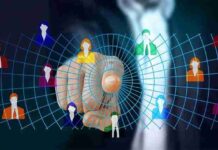
Interestingly, all our endeavors to understand organizational dynamics have been split into two clear halves, pre-pandemic, and post-pandemic. We, in organizations, had just found our key to unlock employee productivity and organizational success through employee experience, and most successful organizations had realized that employee experience was as great a differentiator, if not greater, as customer experience.
‘Only a happy and engaged employee can create a happy and loyal customer!’
“Companies that get their Customer Experience right outperform their peers in Customer Loyalty (+17%) and Revenues (+11%); and companies that ensure stellar Employee Experience outperform the Standard and Poor’s (S&P) top 500 by 122%!” -Liley, Feliciano & Laurs, Accenture
Great Employee Experience is understood at different levels, the first being availability of information, resources, and support at the time when needed to perform well, without having to search in different places. Multiple off-the-shelf AI-based solutions are now available to HR functions that create a personalized onboarding, learning, networking, and career development experience for all employees.
HR today is spoilt for choice between platforms ranging from all-encompassing employee experience like Microsoft 365 with built-in features, to more targeted solutions like Beamery and Gloat, Chatbots, and ever-evolving features within the current HR systems.
While these solutions and many more would continue to enhance employee experience, the current trends of ‘Hybrid work’ and ‘The Great Resignation’ are challenging us to pause and reflect on employee experience in the new context of the future of work. All the technology solutions were best catering to the world where human connect, in-person meetings, and travel to a workplace was almost taken for granted.
I recently travelled to our Oxford office after two years and met colleagues who had joined during the pandemic. Most of them felt nothing less than elation on being able to meet their new colleagues in person!
In this new world of work, how do we adjust our systems, processes, and overall environment to get the aspired employee experience?
Design Workplaces to Leverage the Topsy Turvy
There is a meme doing the rounds these days, “Out of Office message- I’m in office today and will be in meetings all day, I will be able to respond tomorrow when I’m back to working from home.”
This is a classic example of today’s topsy turvy. Office used to be for work and responding to emails, and homes were for social connect and relaxation, and now most people have discovered homes as places they are most productive, and offices where they have satisfying social connect! Depending on the business model, most organizations today are designing the hybrid policy that suits them best.
Recently, an online retail organization in India announced a ‘work from anywhere‘ policy, setting a new benchmark for hybrid!
Last week OUP’s ground floor at the Oxford office was buzzing with activity in the evening and I realized that a team coming to office that day had organized an event for drinks and networking. Some of our offices across the world are now re-designed with more open collaboration spaces for large teams to get together on days they come to office!
Bring Health and Wellbeing Front and Center Like Never Before
Working hybrid has come with some very hard-hitting challenges for employees. Most people have reported significantly extended hours of working, endless screen time, and back-to-back agenda-driven meetings with no down time what- so- ever.
To top that, quite a few are also experiencing loneliness and lack of support. This is a compelling case to add nuance to our understanding of critical events in the employees’ life span at the organization.
Recognize the micro-moments that matter and design for support anytime anywhere. When we design experiences, we don’t just limit our understanding to events like the first day at work, promotions, work anniversaries etc. We need to be able to identify moments when the employee is feeling excluded, when they are anxious about their child’s health, or just want to talk to an expert to get a clearer perspective. Install tools that enable an ‘always-on’ feedback mechanism to identify hotspots in teams or business units or even regions where people are experiencing high stress and inject emotional support in real-time.
At OUP we have a global team for employees and their families to access counseling and support in their own timezone and in their local language ….and in addition, we have a wonderful group of colleagues who trained as ‘Mental Health First Aiders’ and are available for support to anyone who needs.
While our employee networks are also highly active, I’d like to make a special mention of the Befriender Network, where people can get support after having gone through an emotional or traumatic life event. Everyone plays a role in creating a safe and enriching workplace!
Lead Change in Mindsets to Enable Deeper Human Connects on Virtual Platforms
While organisation structures have responded swiftly to the changed situation encouraging remote or hybrid working, mindsets are yet to catch up. Quite a few leaders and managers tend to rate their co-located colleagues more favorably, unconsciously being victims of Proximity Bias or Presenteeism.
This mindset is not just seen in managers, quite a few team members are also grappling with the challenge of establishing their credibility or performance while working remotely, or are staying available for meetings across time zones, just to compensate for not being present in person in office, leading to high degree of stress.
I remember in my early career years, when going to a designated workplace from Monday to Friday was the norm, taking coffee breaks with peers or stopping for a long(ish) chat at the water cooler was also the norm. That brief personal and informal connect in office used to be refreshing and therapeutic and helped us deliver better. The current virtual meeting format does not lend itself naturally to informal connects between colleagues as most meeting have strict timelines and agendas with very little space for chats to warm up to the agenda.
HR needs to re-establish performance standards, re-enable managers to assess performance and potential without bias, and re-normalize coffee connects or breaks in the virtual world of work. Leaders and managers need to role-model the change in mindsets by making simple declarations like they don’t expect people to respond outside of their working time, or ensuring personal connects without formal agendas with individuals in their teams.
Having worked as a remote team member and manager, in all my virtual meetings, I’ve instituted a ‘check-in round’ before the formal agenda begins, to consciously include all my team members and normalize informal connect.
Design Hyper-Personalized Learning and Development Experiences and Empower Employees to Choose their Paths
In the day and age of hyper-personalization of all online content coming our way, HR needs to think of employee learning and career development also as unique to each individual. Conceptualize your learning solutions keeping employees at the center and enable them to make choices based on their needs. For example, our learning hub is designed like a marketplace of learning experiences with built-in micro-nudges.
Based on the individual’s aspiration, self-assessment of gap, and their own learning preferences, they choose from various available options like, workshops, shadowing an expert, coach, or a mentor. The role of HR is to create an environment where learning in the flow of work is not only available but also encouraged and experienced as necessary to grow.
I’ve also seen the learning preferences evolve from formal long offsite programs to bite-sized asynchronous content. It’s interesting that employees are again asking to come together as groups to learn, though for shorter time spans. Cohort learning and social learning will continue to be integral parts of employee learning experiences even as we personalize learning journeys for individuals.








